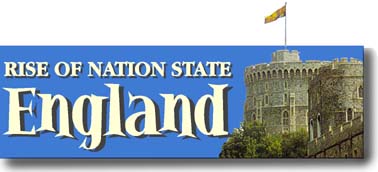
|


|
|
|
Mr. Sedivy's
More Features:
|
Highlands Ranch High School - Mr. Sedivy Rise of Nation State England France French Throne Philip VI (1328 - 1350) Edward III (1327 - 1377)
A clerk wrote out the details of each agreement twice. They did a zig-zag cut between the two copies, giving one copy to the commander and one to the soldier - Like upper and lower set of teeth, which is how such documents got their names. By Edward III's time there were fewer knights on horseback, and many more archers and other foot soldiers in the king's army. To get an army across the channel with horses, siege towers, equipment, cooks, and blacksmiths was not easy and required a large fleet of ships. They loaded these at the so-called "Cinque Ports," Dover, Romney, Sandwich, Hastings, and Hythe. Longbows at Crecy The English army fought short summer campaigns and retreated before King Philip could gather forces. After a raid in Normandy, Philip went after Edward. The French had about 12,000 more men. Edward took the high ground at Crecy. The longbows again won out; archers could fire six rounds minute. In retreat, many French knights were trampled to death by their horses. After Crecy, Edward marched north to Calais. He took over the castle and it became a base for the English on French soil. Edward IV the Black Prince
King Edward was growing old and his son, the Black Prince, fell ill and was unable to fight. Little by little, year after year, the French regained their lost territories. When Edward died there were only a few coastal towns left. The war was unpopular because of loss of life and high taxes, so King Richard of England made peace in 1396. Mr. Sedivy's Lecture Notes & Historical Info The Celts - Rise of Nation State England - Wales and Scotland The 100 Years War More Information Class Activities Related Information
|
Highlands Ranch High School ![]() 9375 South Cresthill Lane
9375 South Cresthill Lane ![]() Highlands Ranch, Colorado 80126
Highlands Ranch, Colorado 80126 ![]() 303-471-7000
303-471-7000
Mr. Sedivy's History Classes
| Colorado History | American
Government | Advanced Placement Modern European
History | Rise of Nation State England | World
History |
| Home | Back to top of page |
Site Contents |





